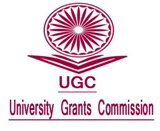Role of Government and Non-Government Organizations in Boosting Agricultural Production towards Meeting Household Nutrition as Perceived by Rural Women
DOI:
https://doi.org/10.26725/JEE.2022.1.34.6740-6749Keywords:
Agricultural production, GOs and NGOs, Household nutrition, Role, Perception, Agricultural Production; Household nutrition; GO and NGO; Perception; BangladeshAbstract
The study was undertaken to have an understanding of rural women’s perception of the role played by the government and non-government organizations (GOs and NGOs) to boost agricultural production in Lama upazila under Bandarban district of Bangladesh towards meeting household nutrition. Besides, attempts were made to explore the quality of service provided by the GOs and NGOs to boost agricultural production and to explore the problems faced by them to meet the demand of household nutrition. Eighty six percent of rural women perceived the role played by the GOs and NGOs as 'somehow satisfied' to 'satisfied level'. Among the rural women, 90 percent of the respondents expressed that they face moderate to high level of problems to meet their demands for household nutrition. The services from the all concerned GOs and NGOs should be provided in such a way that could help more to boost agricultural production as well as meet the demand of household nutrition of the rural women in the study area.References
Agrawala, S., Ota, T., Ahmed, A. U., Smith, J., & Van Aalst, M. (2003). Development and Climate Change in Bangladesh: Focus on Coastal Flooding and the Sundarbans. Organisation for Economic Co-operation and Development (OECD), Paris.
Alam, G. M. (2008). Impact of the Private Universities on Bangladeshi Education System: An investigation on education policy. VDM: Germany.
Alam, G. M., & Rahaman, M. (2008). The impact of migration on development: A comparative study between skilled and semi/unskilled emigrants. Journal of International Business Studies, 4, 117-131.
Alam, G. M., Hoque, K. E., Khalifa, M. T. B., Siraj, S. B., & Ghani, M. F. B. A. (2009). The role of agriculture education and training on agriculture economics and national development of Bangladesh. African Journal of Agricultural Research, 4(12), 1334-1350.
Alam, M. S. (2012). Food Security through GONGO Partnership. The Daily Star, Dhaka, Bangladesh.
Ashley, C., & Maxwell, S. (2001). Rethinking rural development. Development Policy Review, 19(4), 395–425.
Begum, H. A., Perveen, R., Chakma, E., Dewan, L., Afroze, R. S., & Tangen, D. (2019). The challenges of geographical inclusive education in rural Bangladesh. International Journal of Inclusive Education, 23(1), 7-22.
Duedu, K. O., Yarnie, E. A., Tetteh-Quarcoo, P. B., Attah, S. K., Donkor, E. S., & Ayeh-Kumi, P. F. (2014). A comparative survey of the prevalence of human parasites found in fresh vegetables sold in supermarkets and open-aired markets in Accra, Ghana. BMC Research Notes, 7(1), 1-6.
Fanzo, J., Marshall, Q., Dobermann, D., Wong, J., Merchan, R. I., Jaber, M. I., Souza, A., Verjee, N., & Davis, K. (2015). Integration of nutrition into extension and advisory services: A synthesis of experiences, lessons, and recommendations. Food and Nutrition Bulletin, 36(2), 120-137.
FAO (Food and Agriculture Organization). (2014). Towards sustainable agriculture and improved food security & nutrition, Bangladesh Country Programming Framework. FAO, Rome, Italy.
GFSS (Global Food Security Strategy). (2018). Bangladesh Country Plan. Retrieved from https://www.usaid.gov/documents/1867/global-food-security-strategy-gfss-bangladesh-country-plan.
Hasibuan, A. M., Gregg, D., & Stringer, R. (2019). Accounting for diverse risk attitudes in measures of risk perceptions: A case study of climate change risk for small-scale citrus farmers in Indonesia. Land Use Policy, 104252.
Karim, Z., Bakar, M. A., & Islam, M. N. (2009). Study of the Implementation Status and Effectiveness of New Agricultural Extension Policy for Technology Adoption. National Food Policy Capacity Strengthening Programme (NFPCSP), Dhaka, Bangladesh.
Malone, P., Akbar, S. U., Bell, M., & Bohn, A. B. (2013). Report on the Status of ICT for Agricultural Extension in Bangladesh. MEAS ICT Support Project. Retrieved from https://agrilinks.org.
Mamun-ur-Rashid, M., Kamruzzaman, M., & Mustafa, E. (2017). Women participation in agricultural extension services in Bangladesh: Current status, prospects and challenges. Bangladesh Journal of Extension Education, ISSN. 1011, 3916.
Miah, M., Alam, Q. M., & Mohabbatullah, M. (2018). Household food security among indigenous hill people in Khagrachari hill district of Bangladesh. Bangladesh Journal of Agricultural Economics, 37.
MoA (Ministry of Agriculture). (2015). National Agricultural Extension Policy (Draft). Ministry of Agriculture, Government of the People’s Republic of Bangladesh.
Mondal, M. H. (2010). Crop agriculture of Bangladesh: Challenges and opportunities. Bangladesh Journal Agricultural Research, 35(2), 235-245.
Nath, N. C. (2015). Food security of Bangladesh: Status, challenges and strategic policy options. Bangladesh Journal of Political Economy, 31(2), 189-250.
Parveen, S. (2008). Access of rural women to productive resources in Bangladesh: A pillar for promoting the environment. International Journal Rural Studies, 15(1), 1-8.
Shamsuddoha, M. (2009). Development of livestock sector through leading NGO in Bangladesh. The University of Suceava Annals of Economics and Public Administration, 9(1), 36-44.
Shelly, A. B., & Costa, M. D. (2000). Women in Aquaculture: Initiatives of Caritas Bangladesh. Bangladesh Institute of Development Studies (BIDS), Bangladesh.
Siddika, A., Kobra, M. K., Tanin, S., & Afrin, S. (2018). Non-government organizations and their contribution in rural development:An example of Bagatipara upazila, Natore district, Bangladesh. International Journal of Innovative Science and Research Technology, 3(4), 747-752.
Uccello, E., Kauffmann, D., Calo, M., & Streissel, M. (2017). Nutrition-Sensitive Agriculture and Food Systems in Practice: Options for Intervention. FAO, Rome, Italy.
Uddin, M. N., Bokelmann, W., & Dunn, E. S. (2017). Determinants of farmers’ perception of climate change: A case study from the coastal region of Bangladesh. American Journal of Climate Change, 6, 151-165.
USAID (United States Agency for International Development). (2017). Country Profile: Bangladesh. Retrieved from https://feedthefuture.gov/country/Bangladesh.
Walsham, M. (2009). Assessing the Evidence:Environment, Climate Change and Migration in Bangladesh. Dhaka: IOM Bangladesh.
Wanwimolruk, S., Phopin, K., Boonpangrak, S.,& Prachayasittikul, V. (2016). Food safety in Thailand 4: Comparison of pesticide residues found in three commonly consumed vegetables purchased from local markets and supermarkets in Thailand. PeerJ, 4,e2432.
Wossen, T., Abdoulaye, T., Alene, A., Haile, M. G., Feleke, S., Olanrewaju, A., & Manyong, V. (2017). Impacts of extension access and cooperative membership on technology adoption and household welfare. Journal of Rural Studies, 54, 223-233.
Downloads
Published
How to Cite
Issue
Section
License
Copyright (c) 2022 https://creativecommons.org/licenses/by-nc-sa/4.0/

This work is licensed under a Creative Commons Attribution-NonCommercial-ShareAlike 4.0 International License.
Authors who publish with JEE agree to the following terms:
- Authors retain copyright and grant JEE right of first publication with the work simultaneously licensed under a Creative Commons Attribution License that allows others to share the work with an acknowledgement of the work's authorship and initial publication in this journal.
- Authors are able to enter into separate, additional contractual arrangements for the non-exclusive distribution of the journal's published version of the work (e.g., post it to an institutional repository or publish it in a book), with an acknowledgement of its initial publication in this journal.
- Authors are permitted and encouraged to post their work online (e.g., in institutional repositories or on their website) prior to and during the submission process, as it can lead to productive exchanges, as well as earlier and greater citation of published work (See The Effect of Open Access).
Extension Education Society
https://creativecommons.org/licenses/by-nc-sa/4.0/
This work is licensed under a Creative Commons Attribution-NonCommercial-ShareAlike 4.0 International License.













.png)

